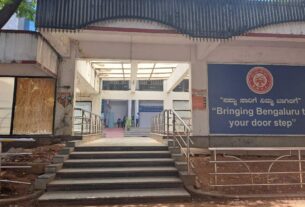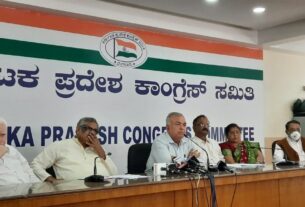The silk weavers under Mysore Power Loom Silk Manufacturers’ Co-operative Society, to get Rs 40 to 50 subsidy per kilogram of pure silk, through the yarn bank scheme.
By Lanka Samanth
Bangalore, April 9, 2019
Of the announced Rs. 2 crores for yarn bank, the central government of India released only Rs. 30 lakh. Weavers demand Rs. 300 subsidies.
The price of pure silk is fluctuating every day, and middlemen are charging commissions from weavers. This resulted in a huge loss to silk weavers. After several requests and a two-year wait, in March the central government approved Yarn bank scheme with Rs. 2 crores to Mysore Power Loom Silk Manufacturers’ Co-operative Society.

With the help of this scheme, the society will sell pure raw silk to weavers by subsidizing Rs 40 to 50. Even though it is a slight relief to the weavers, there is a lot more to do for them. Weavers have a very prominent role after farmers in India.
“We demand and it is needed that Rs. 300 subsidy for silk weavers from central government,” said M. Lakshminarayan, President of Mysore Power Loom Silk Manufacturers’ Co-operative Society Ltd.
Around 12,400 silk weavers are comprised in this society, and 8,000 are registered. But only 200 of them benefit from the current scheme. According to Laxminarayan, based on the fluctuated price the subsidy ranges from a minimum amount of Rs 40 to a maximum of Rs 100.
“We have submitted a memorandum to Smriti Irani, the Union Textile Minister, explaining the fluctuated prices and requested Rs. 300 subsidy on pure silk”. They aim to deliver pure silk directly to the weavers without any middlemen. The board of directors of the society is planning to go to Delhi after the elections and visit the union minister regarding the issue.
In the past, the price of pure raw silk has hit up to Rs. 4,800 per kg. Now the price is around Rs. 3,700 per kg.
Tamil Nadu was the first state benefited by such schemes and next is Andhra Pradesh. “Now 20 schemes are functional in Tamil Nadu to help silk weavers and around 10 in Andhra Pradesh,” said Banashankar, ex-president “In Bangalore, this is the only society working for silk weavers and persistently approaching the government for the subsidy.”
There is a demand of 34,000 metric ton per year in India whereas the production is 2,800 to 30,000 metric ton every year. Moreover, imported silk is of not good quality. When asked about imports and exports Laksminarayan said to the Softcopy Newspaper, “If the government introduces such schemes for silk weavers, India can export best quality silk to other countries.”
After all, the Make in India label will be achieved by such credible schemes. Silk weavers are those benefitted by such projects, but in turn, it improves India exports and further improves GDP. Many think that it might be a small scheme that only a few earn profits, but the number of people benefits implies the country’s development.
Feature Image Credits – Soma Pal




